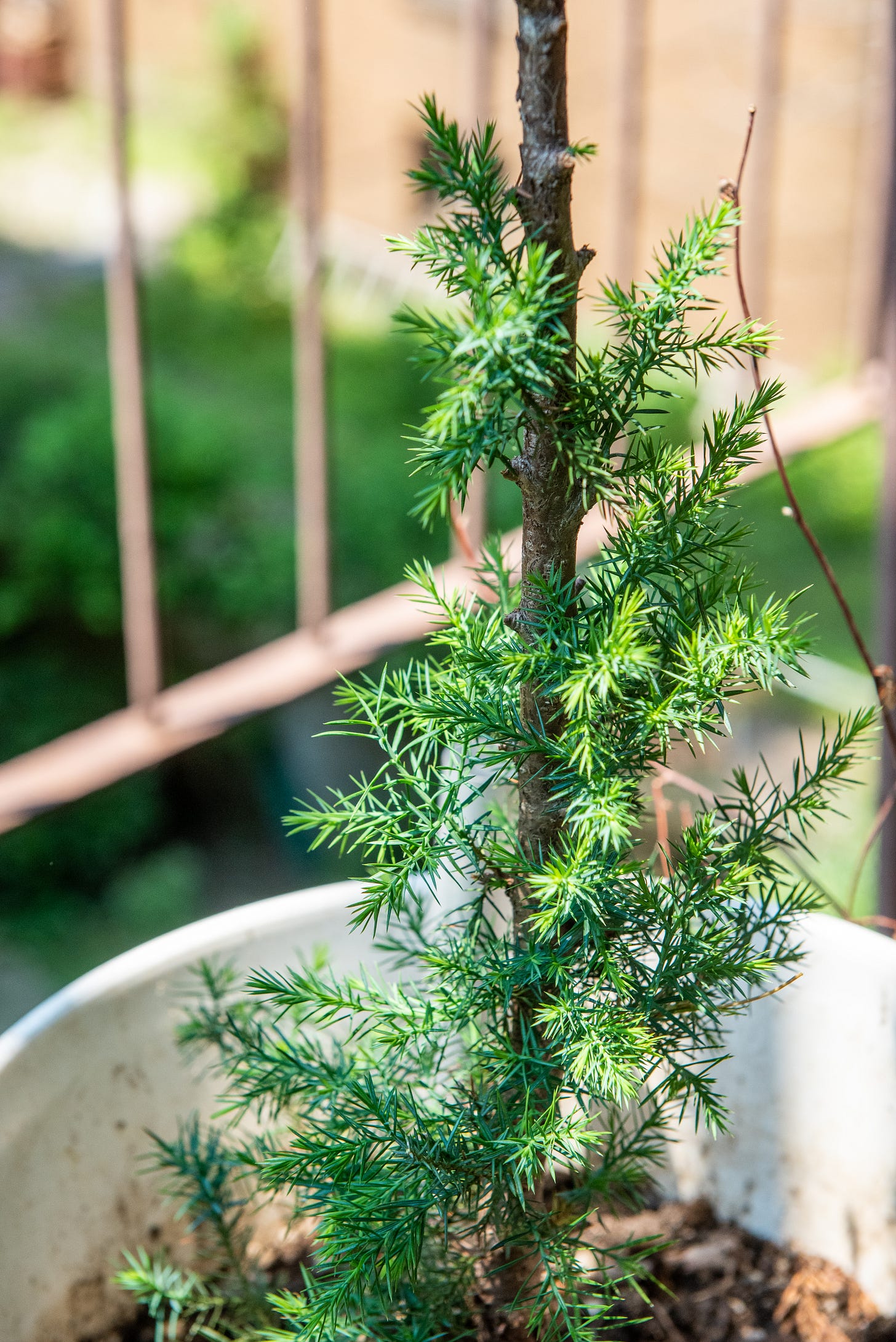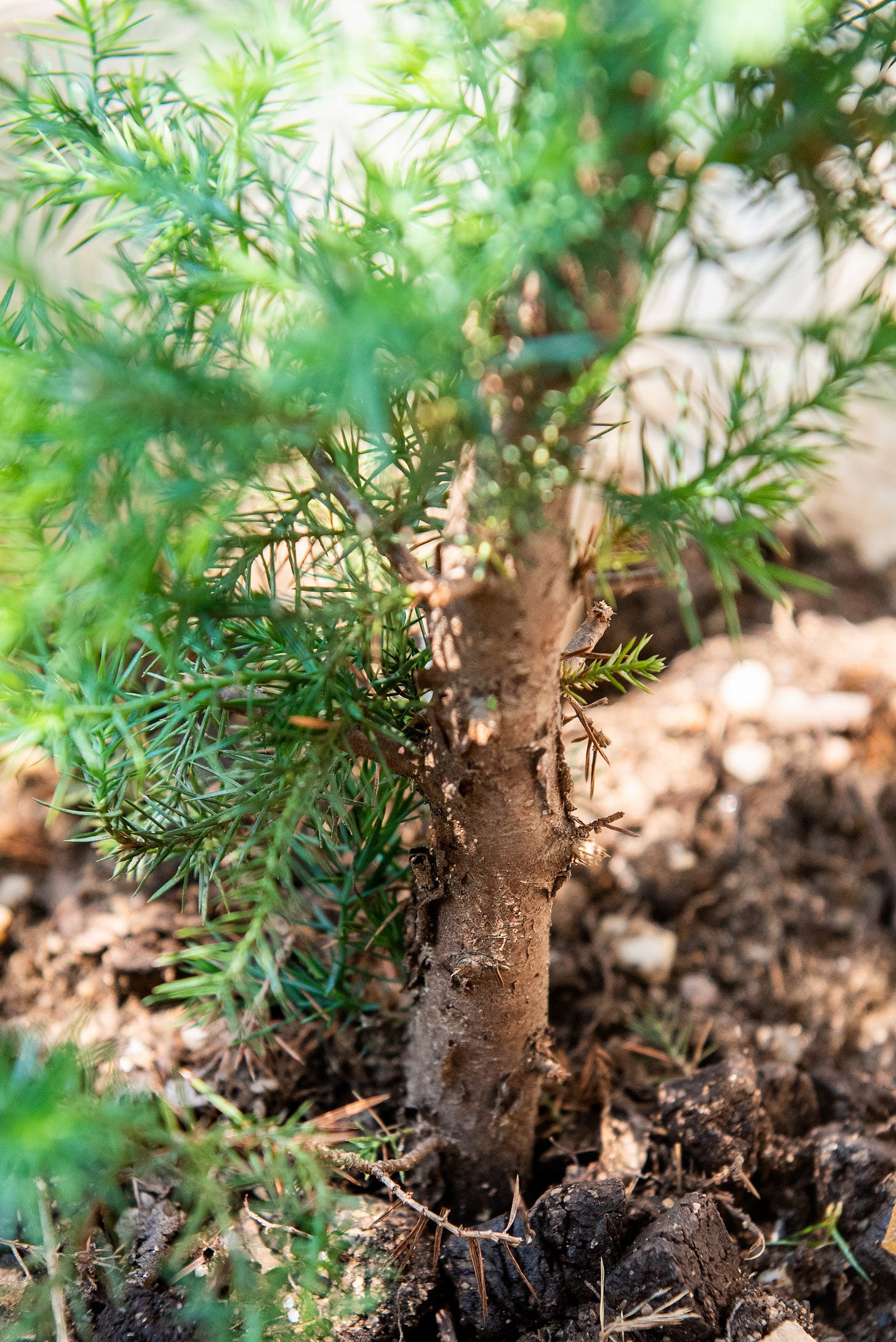The zombie juniper
Sometimes the best thing you can do for a tree is to leave it the hell alone.
I haven’t paid much attention to this eastern red cedar since February when the squirrels chewed it to bits. Here’s what it looked like when I bought the tree back in October. It’s the smaller one on the left; the larger sibling is dead.
By the time I caught the squirrels in action, they’d reduced the tree to a stick in a bucket with a couple tufts of green.
Evergreen conifers like eastern red cedar—which is actually a native juniper, whose fragrant wood is used to make cedar chests—don’t tend to survive complete defoliation. With a deciduous tree whose leaves die off every fall, you can chop a trunk back to a stump and reliably expect new bud growth. Most conifers, on the other hand, need some green to keep the tree alive. So I figured this tree was a goner, but I kept it around just in case.
The next month, I noticed signs of new bud growth.
Now it’s bursting with new foliage.
It even looks like the beginnings of a tree that could some day become a bonsai. The trunk has good taper and some subtle movement at the base. I haven’t dug too deeply into the soil for fear of disturbing the roots, but I think there’s a decent nebari lurking beneath. The tree reminds me of spruce forests full of gaunt trunks racing upward to catch the sunlight.
All I’ve done is fertilize and pinch out some of the new growth tips to encourage ramification in the branches. With a five-gallon bucket acting as a pot, I haven’t even watered it regularly; natural rainfall and the odd splash of tea wastewater has been enough to keep it hydrated. The pyramidal growth habit of the new foliage is all the tree’s doing.
Bonsai is a practice with long periods of growth punctuated by dramatic reductions. You grow a trunk 15 feet tall, then chop it back to six inches. You let branches extend through a growing season, then trim them back to a single pair of leaves. Each stage of that growth is important, even if the bulk of the biomass is thrown away. Growth feeds a tree. Gives it energy. Then you make dramatic cuts. The tree is forced to direct that energy somewhere new. Human intention vs natural inclination. Bonsai is a high-wire walk between two skyscrapers. You can only make the crossing when there’s tension on the line.
In truth I should thank the squirrels. They made far more dramatic reductions than I would have on this tree. If they hadn’t stripped it bare, it wouldn’t have formed this dense, bushy growth that points the way towards a proper design. From an artistic perspective, the squirrels were probably the best thing that could have happened to it.
It’s also true that I lucked out. The squirrels stripped a bunch of trees that didn’t wind up making it. I suspect this eastern red cedar survived because it was a well established tree and its species grows like a weed on the East Coast. Natural selection in action.
Nature has done its part and lent me a hand with a happy accident. Now it’s my job to shepherd the tree forward through the next stage of its development. Wires taut.
Tree reading
The 14-year-old winner of yesterday’s National Spelling Bee clinched her win with the word murraya, an Asian citrus tree that’s also called orange jessamine. [CNN]
LA has a flaming palm tree problem, because palm trees are GRASS. [Los Angeles Times]






Goddess bless the hungry 🐿 s